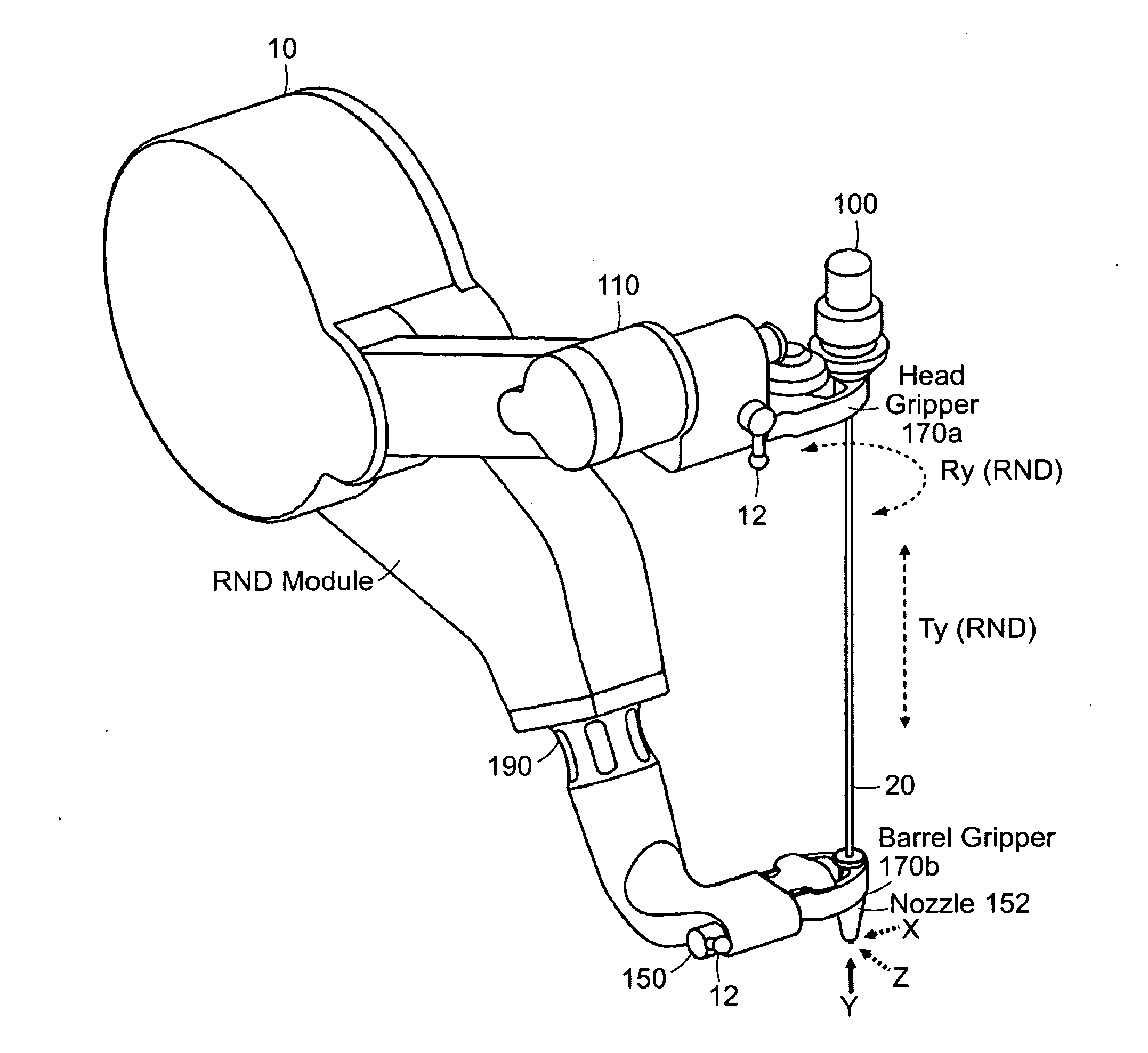Rotating needle driver and apparatuses and methods related thereto
- Summary
- Abstract
- Description
- Claims
- Application Information
AI Technical Summary
Benefits of technology
Problems solved by technology
Method used
Image
Examples
example 1
[0117]A study was undertaken to evaluate two features of a new rotating needle driver in a domestic swine model: (1) a quick release safety mechanism and (2) the impact of spinning the needle on the force profile.
Materials and Methods
[0118]The robotic system used in these experiments is an updated version of the “AcuBot” system built by the Urology Robotics Laboratory at Johns Hopkins Medical Institutions. The original AcuBot included the “PAKY” (Percutaneous Access of the KidneY) needle driver, the “RCM” (Remote Center of Motion) orientation module, and joystick control. A three degree of freedom Cartesian stage, passive positioning S-arm, and “bridge frame” enable the system to achieve a compact and flexible design for interventions at multiple points along the body.
[0119]A compact medical instrument driver (RND) was provided that holds the needle from two points for enhanced support and accurate insertions. This design prevents buckling of long thin needles. Moreover, it is capab...
PUM
 Login to View More
Login to View More Abstract
Description
Claims
Application Information
 Login to View More
Login to View More - R&D
- Intellectual Property
- Life Sciences
- Materials
- Tech Scout
- Unparalleled Data Quality
- Higher Quality Content
- 60% Fewer Hallucinations
Browse by: Latest US Patents, China's latest patents, Technical Efficacy Thesaurus, Application Domain, Technology Topic, Popular Technical Reports.
© 2025 PatSnap. All rights reserved.Legal|Privacy policy|Modern Slavery Act Transparency Statement|Sitemap|About US| Contact US: help@patsnap.com



